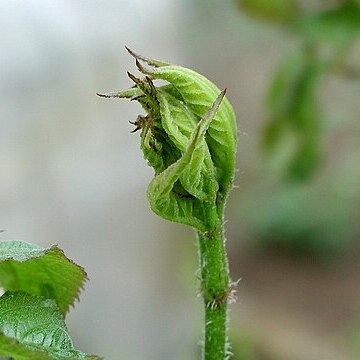A stout herb. It grows 2.4 m high and spreads 2.4 m wide. The leaves are large and compound. The leaflets are round and 1 cm long. They have fine teeth. Each year it produces edible shoots from its roots. The flowers are in large panicles. The fruit are black. They are 3 mm across.

